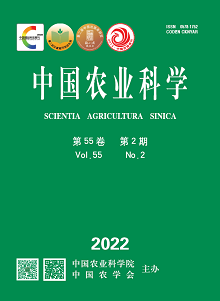【Objective】 All higher plants regulate their root morphology to obtain sufficient nutrients and moisture from the soil environment, of which nitrogen is a critical factor in regulating root morphology. The purpose of this study was to explore the effects of nitrogen levels and forms on root morphology of mini Chinese cabbage and its physiological mechanism and to identify the key factors involved in root morphology shaping, which laid a foundation for further research on the molecular mechanism of nitrogen regulation on plant root morphology. 【Method】 Mini Chinese cabbage (variety ‘Hui nong jin wawa’) were used as test material, four combinations including two nitrogen concentrations (0.1 mmol∙L -1 and 1 mmol∙L-1) and two nitrogen forms (NO3- and NH4+) were set up. The root morphological parameters, including total root length, root volume, root surface area and root tip number, and root physiological indicators, including NO3- content, NH4+ content, sugar, nitric oxide (NO), hydrogen peroxide (H2O2), as well as the activities of rooting related enzymes such as peroxidase (POD), polyphenol oxidase (PPO) and indole acetic acid oxidase (IAAO), were evaluated by root scanner and physiological experiment methods. The contents of endogenous hormones, including cytokinins (CTK), jasmonic acids (JA), auxin (IAA), salicylic acid (SA), 1-aminocyclopropyl-1-carboxylic acid (ACC) and abscisic acid (ABA), were determined by LC-MS/SM absolute quantitative analysis using isotope internal standard method. The correlation between root morphology and physiological indexes were also analyzed. 【Result】Under the same nitrogen form, the different nitrogen levels had different effects on the root morphology and physiology of mini Chinese cabbage. Compared with higher concentration (1.0 mmol∙L-1) NO3- (HN), low concentration (0.1 mmol∙L-1) NO3- (LN) significantly increased the total root length, surface area and number of root tips by 43%, 24% and 50%, respectivley. Compared with HN treatment, the content of reducing sugar increased by 55.81%, the content of NO increased by 18.3%, while the content of H2O2 decreased by 20.44% in LN-treated plants. Compared with higher concentration (1.0 mmol∙L-1) of NH4+ (HA), the low concentration (0.1 mmol∙L-1) of NH4+ (LA) increased the total root length, total root volume, total root surface area and root tips by 96%, 73%, 85%, and 45%, respectively. Compared with HA treatment, LA treatment increased the reducing sugar content by 200%, and both NO and H2O2 decreased to 74.59% and 13.58%, respectively. Under the same nitrogen level, the different nitrogen forms affected the root morphology and physiological indexes of mini Chinese cabbage. Compared with LA treatment, LN treatment increased the total root length and total root surface area, decreased the total root volume and total root tip number, and increased the content of reducing sugars. The contents of NO and H2O2 under LA treatment were 73.68% and 40.98% lower than that under LN treatment, respectively. Compared with HA treatment, HN treatment increased total root length, total root volume and total root surface area, and decreased the total number of root tips. Compared with HN treatment, HA treatment reduced NO and H2O2 content by 82.16%, and 58.66%, respectively. The content of 12-oxo- phytodienoic acid (12-OPDA) in root hormones was the highest under LA treatment, which was 55.18% higher than that under HA treatment. Under each treatment, the content of 12-OPDA was LA>LN>HA>HN; the content of indole acetic acid (IAA) was the largest in HN, which was 44.10% higher than LN, and the IAA content of LA was 93.79% higher than that of HA. The content of IAA under each treatment was HN> LA>LN>HA. The results of correlation analysis between root morphology and physiological indexes showed that root length was significantly positively correlated with reducing sugar (P<0.01), and the number of root tips was positively correlated with 12-OPDA (P<0.05). 【Conclusion】The low concentration of nitrate nitrogen affected root reducing sugar and promotesd the elongation of the main root and lateral roots of mini Chinese cabbage. The low concentration of ammonium nitrogen regulated the 12-OPDA content, which could increase the number of lateral roots of mini Chinese cabbage root system.









